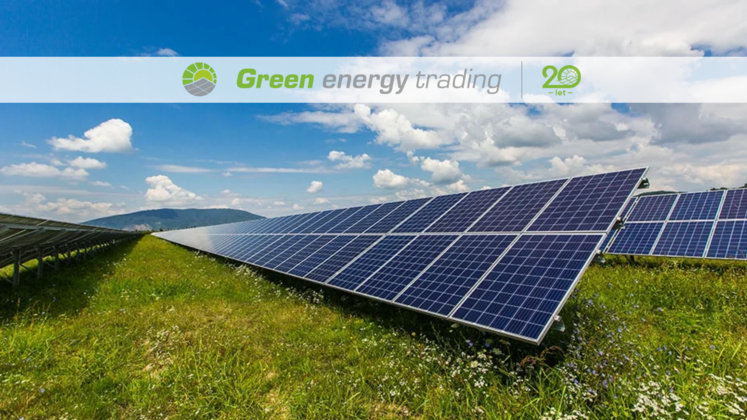Як виробляється фотоелектрична енергія?
 14. 8. 2025
14. 8. 2025
The transition from non-renewable energy sources to renewable energy sources is becoming increasingly important as the effects of global warming and climate change become apparent.
Of all the technologies that use renewable energy sources, photovoltaics, known to many as solar power, is the most widespread. It requires only sunlight to generate electricity. It is one of the simplest and cheapest renewable energy technologies in terms of installation and operation.
In general, this mechanism works by converting sunlight into electricity using a semiconductor p-n junction, which is the basis of these technologies. A semiconductor is a material that has conductivity between a highly conductive metal and an insulator—it is a kind of middle ground.
However, one of the key properties of semiconductor materials, which also applies to semiconductor junctions, is that the supply of energy can change their state from insulating to conductive – this is a type of periodic conductivity – and it is precisely this change of state that is advantageous for most technologies, as it allows conductivity to be adapted to specific scenarios.
While many semiconductors change their electrical conductivity properties under the influence of heat (thermal energy), the semiconductor junction in a photovoltaic cell changes its conductivity when irradiated by photons of sunlight.
Although there are many different types of photovoltaic cells today—such as organic solar cells, dye-sensitized solar cells, and quantum dot solar cells—which have slightly different operating mechanisms, we will focus on traditional inorganic solar cells, as these are the most commercially widespread.
Basic principles of photovoltaic cell operation
Solar cells (inorganic) usually consist of doped silicon materials (now nanomaterials can also be used) and junctions are created by placing p-type silicon and n-type silicon next to each other. For information, n-type doped material has atoms that contain one extra electron in the atomic lattice, while p-type doped materials have atoms that have one electron less. This leads to the formation of excess electrons in n-type materials and holes in p-type materials.
Both charge carriers are involved in the energy conversion mechanism. It should be noted that only certain materials can be used to create junctions in a photovoltaic cell, as the materials must be capable of undergoing the photoelectric effect, i.e., the generation of voltage in the presence of light.
When these two doped silicon materials are placed next to each other, they form a semiconductor junction. On one side of this junction, there are a large number of holes, and on the other side, there are a large number of electrons. Between these two charge carrier regions is an electrically neutral region known as the depletion zone, which acts as an interface between the two charge carrier regions. The depletion zone is formed when no sunlight is shining on the photovoltaic cell.
The depletion zone itself is formed by the interaction and recombination of some electrons and holes. Both charge carriers combine to form neutral particles that separate the other charge carriers from each other.
In addition to separating charged particles, the neutral zone also creates an internal electric field within the solar cell that prevents the two charge carrier regions from completely merging. This is very important because if these two areas were to collide completely, the result would be a completely electrically neutral material that would not function as intended. This is because the migration of these charges under the influence of light stimulation is the reason why solar cells work and photovoltaic energy is generated, and an electrically neutral material would not generate an electric current.
Generation of photovoltaic energy
Electric current is generated when photons of light strike a solar cell because the photons of light transfer energy to the semiconductor junction, which then transfers the energy to free charge carriers on both sides of the junction/depletion zone. When the charge carriers have increased energy, their mobility increases so much that they enter the depletion zone.
When the charge carriers enter the depletion zone, its width decreases. The width eventually decreases to the point where the internal electric field (created by the depletion zone) is no longer strong enough to counteract the movement of the charge carriers. This causes the electrons to move toward the holes, where they recombine. This process of charge carrier recombination generates a constant electric current, which is also the production of photovoltaic electrical energy that can be stored.
Once the electric current is produced, it remains in this state as long as sunlight hits the junction. When the charge carriers recombine, the thickness of the depletion zone temporarily increases, but this only lasts until the next photon strikes, supplying the charge carriers with more energy. Photovoltaic energy can therefore be obtained continuously as long as sunlight is available. The depletion zone does not return to its natural resting state/thickness until sunlight hits it.
When there is no sunlight, the device "resets" and the depletion zone returns to its original thickness and the charge carriers separate again. This process is then repeated when sunlight returns.
Are you considering purchasing photovoltaics? Our product range includes a large selection of solar panels and other photovoltaic components from leading global brands.
